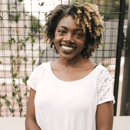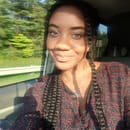The United States has grown increasingly accepting of all sexual orientations, as well as a spectrum of gender identities. We as millennials have watched these changes unfold within our lifetime, which in turn has made our country stronger and more open-minded. Surprisingly, despite the monumental milestones we have conquered as a country for LGBTQ+ rights and acceptance, there are still many obstacles that members of the LGBTQ+ community face when they find themselves in spaces that are not exclusive to the same demographic. Simply put, even in the year 2017, people who identify as LGBTQ+ are seen as a minority, or even a “superior” group in the eyes of people outside of this community.
In addition, it is very easy for people who identify as gay, lesbian, transgender or otherwise to forget that intersectionality exists – and this specifically targets members of minority races: people of color.
The term “intersectionality” was coined by Kimberle Crenshaw, an African-American feminist writer and race theorist, amongst many other influential titles. The term itself is generally used to describe situations involving oppressive ways of thinking – usually ending in the suffix “ism” (i.e. racism, classism, sexism, ableism, etc.), are intertwined with one another and cannot be looked at as exclusively separate from the other. These oppressive systems are used together to even further degrade marginalized groups. One example of intersectionality in our society could be an individual being disabled and female. Another could be the highly possible scenario of a man being black and gay. People who are not in minority positions tend to forget that it can be slightly more taxing for someone who is say, black and gay to gain acceptance among family members or be respected in their own community then their white gay counterparts.
There have been countless times that I have witnessed or heard a queer individual who is not a person of color, speak about their family dynamic after coming out, or even discuss how their family welcomed them with open arms. Before I continue, I know that not all queer individuals who are not a person of color have experienced their family being understanding. It is just very important to keep in mind that with other cultures, family and relationship dynamics are set up differently. That may hinder someone from wanting to express themselves freely, or it may even come down to the question, is It safe to be come out in this environment? Will I experience repercussions from this? What will my family/friends think?
So, with this information, I would advise anyone reading this who may feel that they could be in a position of privilege in the community (white gay men and lesbians, transgender individuals who “pass” or appear to coincide with their gender identity, etc.), to assess their privilege and consider that not everyone may be able to express themselves how they want because of the multiple layers of oppression that they could be exposed to. It is also important to add that not every person of color is limited in this way, but again, it is important to keep these factors in mind. There is a reason why someone you know may not feel comfortable dressing a certain way on the street, or being hesitant to express to their family their gender identity or sexual orientation. It is also important to listen to the struggles of these members, so that the community as a whole can become stronger by trying to tackle this issue. It may not go away completely, but acknowledging is the first step.
We need to listen to each other, and give each other space to validate our feelings and experiences. This goes for members of the LGBTQ+ community, as well as non-members. Communication is key. Learn from others. Most importantly, uplift one another and show each other love. That’s the only thing that can keep communities strong – queer, black, or otherwise.
Photo credits: cover image, 1.



